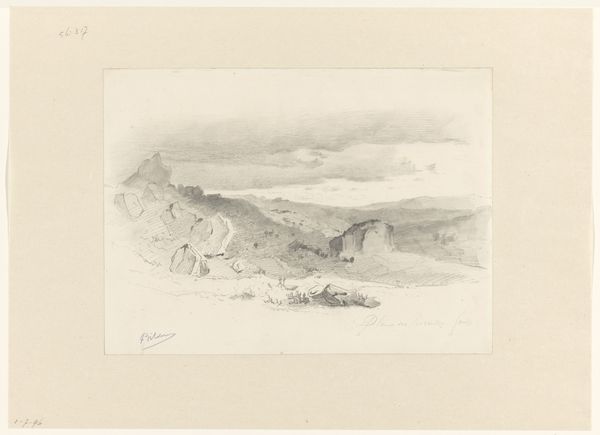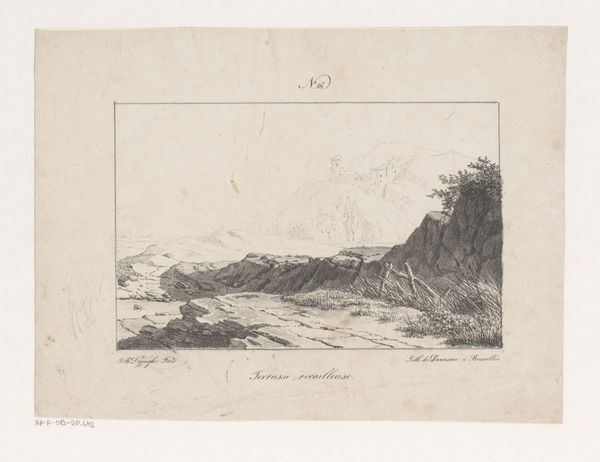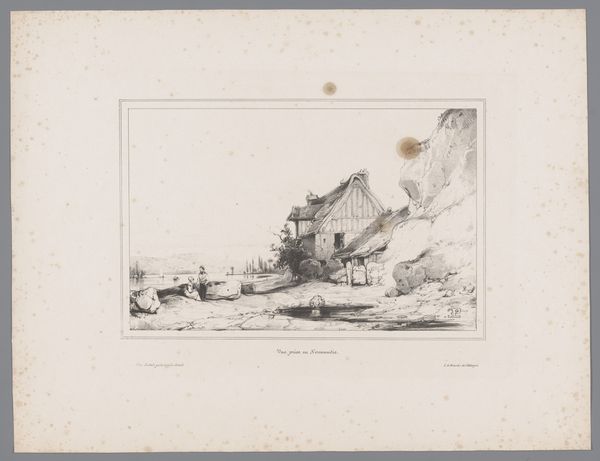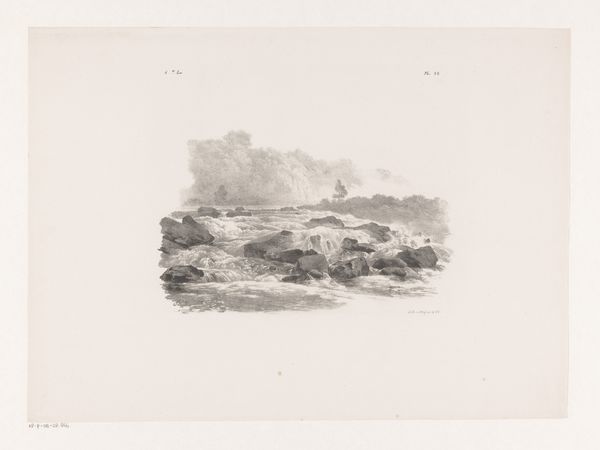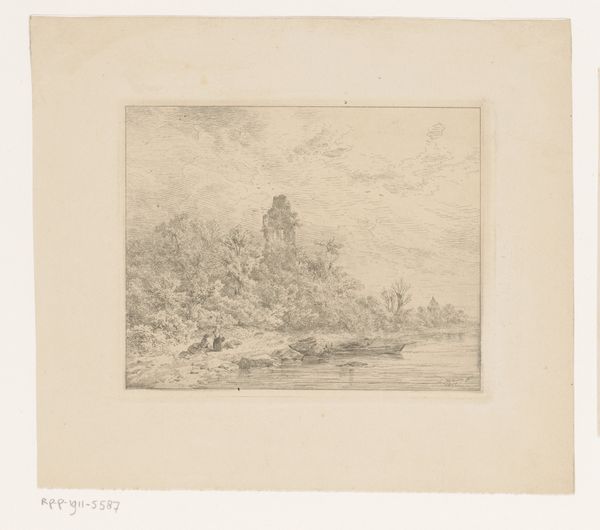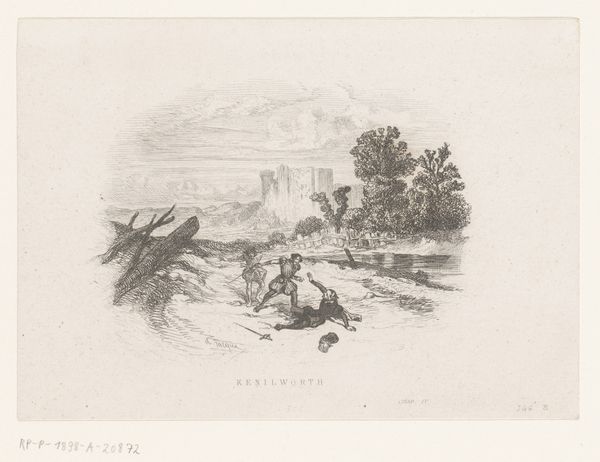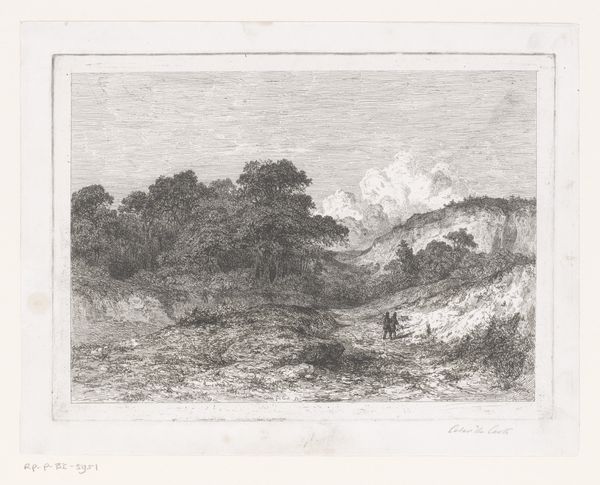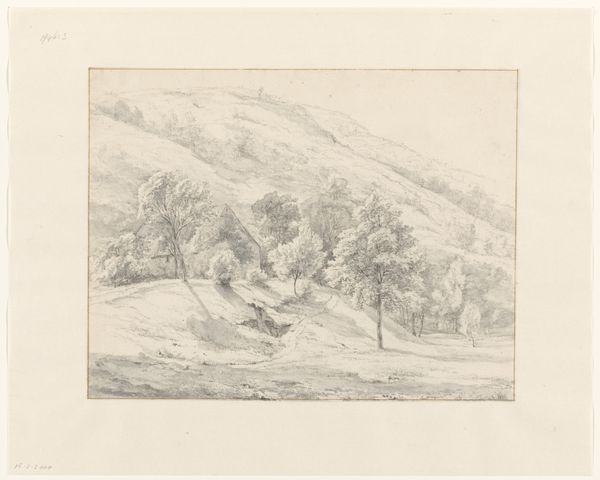
Dimensions: height 263 mm, width 355 mm
Copyright: Rijks Museum: Open Domain
Curator: I'm immediately drawn in by the tranquility. It's so muted and quiet, almost dreamlike, with a lovely, delicate composition. Editor: Indeed. What you are sensing may originate from a perspective formed by Bilders’ romantic spirit, here expressed through “Gezicht op het dorpje St. Ange in Savoije,” which roughly translates to "View of the Village St. Ange in Savoy." Executed in pencil, somewhere between 1848 and 1865. We are fortunate enough to have it here at the Rijksmuseum. Curator: I appreciate the subtle rendering. The soft pencil strokes create such an ephemeral effect. I can almost feel the air, a tangible stillness about it. What strikes me most are the forms that resemble grave stones in the foreground... How does that relate to its contemporary culture? Editor: Considering the Romanticism movement and the growing middle-class’ engagement with the art market, this image offered a glimpse into an untouched, somewhat melancholic space, feeding into the desires of a society grappling with industrialization and rapid urbanization. The resemblance to gravestones speaks, perhaps, to a romanticized meditation on time, history, and the fleeting nature of life. Curator: It makes me wonder about the experience of viewing such work at that time. I mean, who were the audiences engaging with these landscapes, and what did it represent for them? The choice of such modest materials is really something. I would have expected richer pigment in this period. Editor: That's a crucial question to raise. While landscape painting, like this work, offered a form of escapism and an idealized view of nature that had implications in promoting national identity formation, these themes could reach a wider audience by leveraging print culture. Furthermore, the pencil itself suggests intimacy, like a personal reflection open for the public to witness and interpret. Curator: Well, considering its continued appeal, Bilders successfully captured something profound about our relationship to place and memory. Editor: Absolutely. And reflecting upon those landscapes also makes us think about how these themes speak to pressing ecological concerns nowadays, perhaps creating a shared space of consideration across time and viewers.
Comments
No comments
Be the first to comment and join the conversation on the ultimate creative platform.
